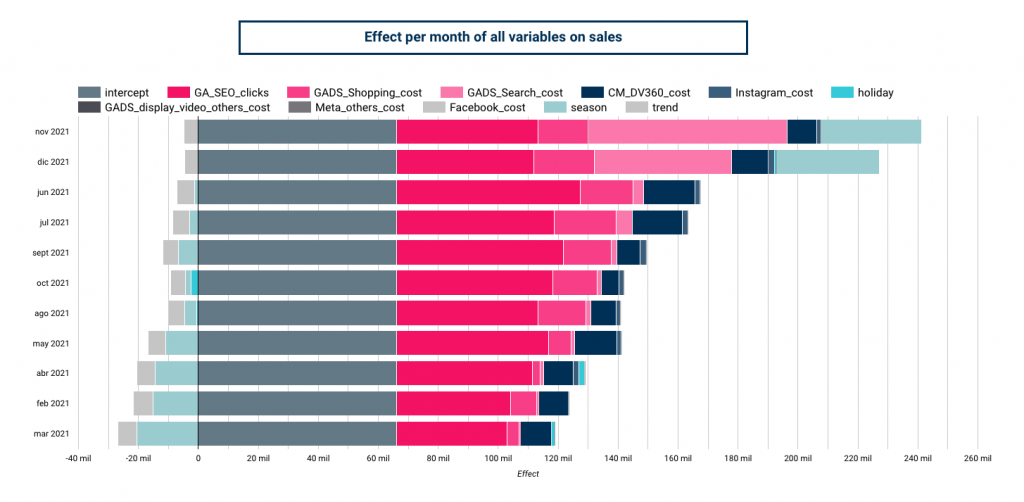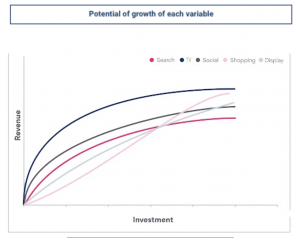What is Marketing Mix Modeling?
According to the paper “Challenges and Opportunities in Media Mix Modeling” by Chan, D., & Perry, M. (2017),
Marketing Mix Modeling (MMM) refers to statistical models used by advertisers to measure the effectiveness of their advertising investments and have existed in various forms since the 1960s. MMMs, as we will call them from now on, use aggregated historical time series data to model sales outcomes based on advertising variables, other marketing variables, and control variables such as weather, seasonality, and market competition.
Metrics like the return on ad spend (ROAS) and optimized advertising budget allocations are derived from these models, relying on the assumption that they provide valid causal results.
In other words, MMMs attempt to answer causal questions for advertisers. For example:
- What was my ROAS on television last year?
- What would my sales be if more or less money were spent next year?
- How should my media budgets be allocated to maximize sales?
What does Marketing Mix Modeling bring to our business?
With MMM, we will achieve two different things:
- Attribution: We will obtain an analysis of all variables that influence the client’s business results, and we will know which are the most relevant to enhance them. The advantage over user-level models is that this model doesn’t only talk about digital data, but by using aggregated data, it can incorporate offline investment data, types of offers, seasonality, and more.
- Predictions: We will be able to discover the most relevant variables in the analyzed period; an MMM will indicate how to enhance each variable and predict how the results will change in each proposed scenario.
We can only carry out high-value activations for decision-making, and for this, an analyst will be needed to interpret the data. However, since aggregated data is used, users are not identified, so an MMM cannot be used to activate audiences or optimize campaign algorithms.
Choosing the best model for our business
In an MMM project, we will work on and create different types of models, and the initial goal will be to choose the one that best suits our business:
Below, we can see the client’s actual sales history (pink line) and how this model has predicted that period (blue line).

In the end, we will choose the model that best fits the client’s sales trend and peaks.
What insights can we extract from our MMM?

- Prediction of potential sales increase: This graph shows all campaigns or actions included in the model. The dots represent the investment and actual sales of that campaign, and thanks to the trend lines, we can see the sales potential of each campaign as we increase the investment.

- ROI of campaigns and variables: In the graph, we can see in dark blue the percentage weight of total sales that a campaign or action has had (calculated by the model). In light blue, we can see the weight that action has had on the total investment (data we give to the model). Lastly, the orange dots show us the ROI of each action, identifying which are the most profitable for our business.
Do you want to know more about what Marketing Mix Modeling can bring to your business? Don’t hesitate to contact our team of experts. We are waiting for you!










 Cookie configuration
Cookie configuration